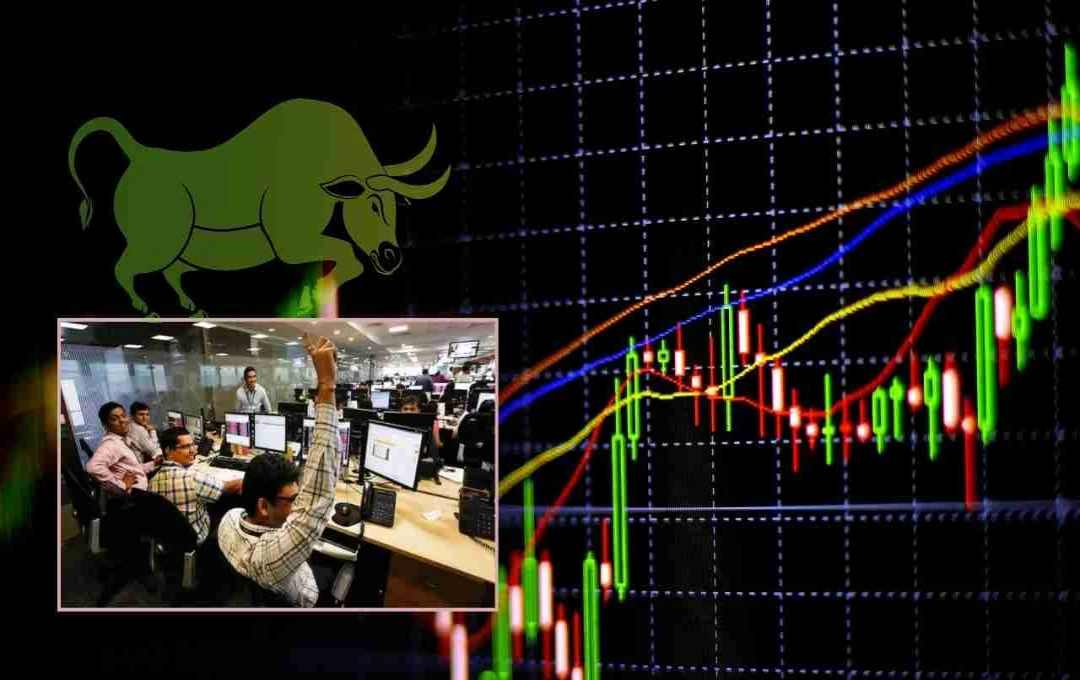Share Market Today: The market showed a spectacular surge on the monthly expiry day, with the Nifty touching a delightful level of 24,450+ intraday. Nifty Bank also recorded a new record high.
The Indian share market witnessed a tremendous surge on Thursday. This rally continued for the third consecutive day, impacting both the Sensex and Nifty. While the Nifty crossed 25500, the Sensex also touched a level above 83500. Bank Nifty touched its all-time high, trading above 57076.
This surge in the market on Thursday came on the day of the monthly derivative expiry, a period usually associated with volatility. However, contrary to expectations, the market saw buying across the board this time. Investors showed particular interest in midcap and large-cap stocks.
Profit of ₹8.2 lakh crore in the last three days

When the market closed on June 23, the total market capitalization of all listed companies on the BSE was ₹4,47,82,499 crore. However, on Thursday, this figure rose to ₹4,56,03,273 crore. In other words, the stock market provided approximately ₹8.2 lakh crore in wealth to investors in three days.
This figure clearly reflects the market's momentum and investor confidence. Continuous increase in foreign investment and the activity of domestic investors have propelled the market to new heights.
Which stocks saw the most activity
Among the stocks that played a significant role in driving the market on Thursday were Bharat Electronics (BEL), Eternal, Bharti Airtel, Tata Steel, Maruti Suzuki, and Bajaj Finance. Strong buying occurred in the shares of these companies, helping to push the market upwards.
On the other hand, major stocks like Tech Mahindra, Kotak Mahindra Bank, SBI, TCS, and Reliance Industries saw a slight slowdown in early trading.
Mobikwik shares fall
One stock that drew attention on Thursday was One Mobikwik Systems. The company's shares recorded a decline of more than 6 percent. According to reports, a block deal took place in the company where a subsidiary of South Africa's Net1 UEPS Technologies sold its 8 percent stake. This caused the stock to fall.
Texmaco Rail receives a large order
On the same day, Texmaco Rail & Engineering's shares saw a 9 percent increase. The company received an international order worth $62.24 million, approximately ₹535 crore. This further strengthened investors' confidence in the company, and the stock jumped.
Which sector took the lead

On Thursday, the auto, financial services, FMCG, metal, pharma, consumer durables, and oil & gas sectors performed outstandingly in the market. Meanwhile, the real estate, PSU bank, and IT sectors saw a slight slowdown.
This diversity shows that the market is not dependent on only a few select sectors, but is showing broad-based strength.
Why the market is showing strength
There were several domestic and global reasons for the market's surge. First of all, it was the day of the monthly derivative expiry, a day on which trading volume typically increases. In addition, foreign signals were also quite positive.
A mixed but positive trend was observed in Asian markets. Japan's Nikkei index rose 0.9 percent to reach a four-month high. The rupee strengthened against the dollar, rising 20 paise to 85.88. The dollar index saw a decline of 0.25 percent.
The stability in oil and gold prices reduced concerns about inflation. Globally, the possibility of interest rate cuts by the US Federal Reserve increased, which supported global markets.
Statement by the Fed Chairman
Fed Chairman Jerome Powell said that it is still difficult to fully understand the impact of tariffs on inflation. However, the possibility of a 25 basis point rate cut in July has now increased to 25 percent, which was only 12.5 percent earlier. This possibility has reached 90 percent in September.
Impact of international politics
At the NATO countries' meeting, Donald Trump said that the US would talk to Iran next week. This raised hopes of reduced tension in the market. According to Trump's statement, the US has pushed back Iran's nuclear facilities, which slightly reduced the possibility of instability in the region.














